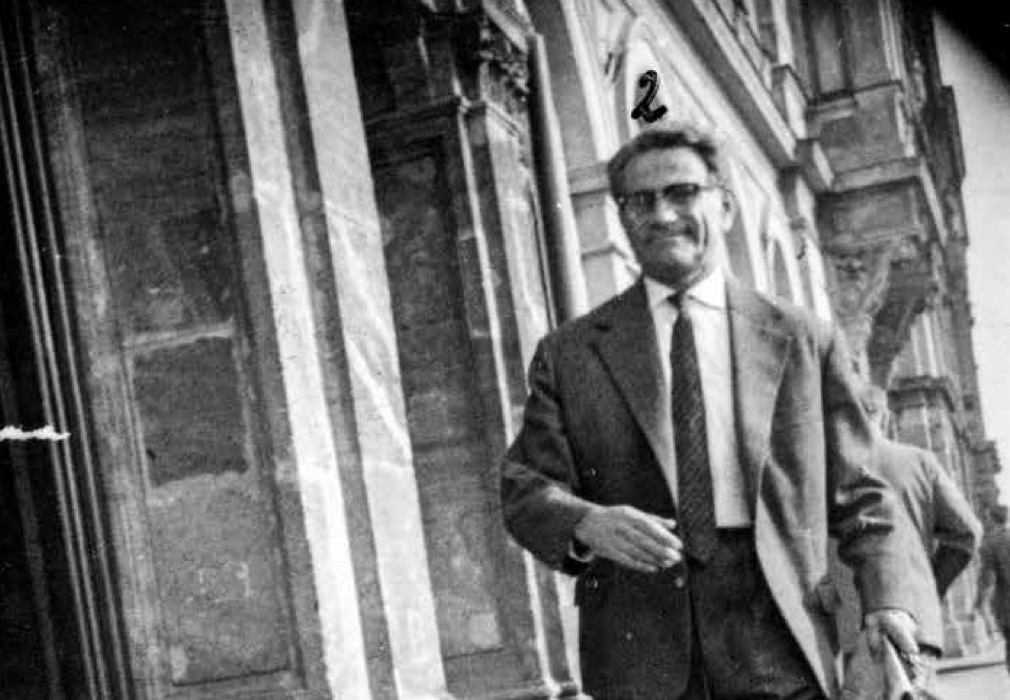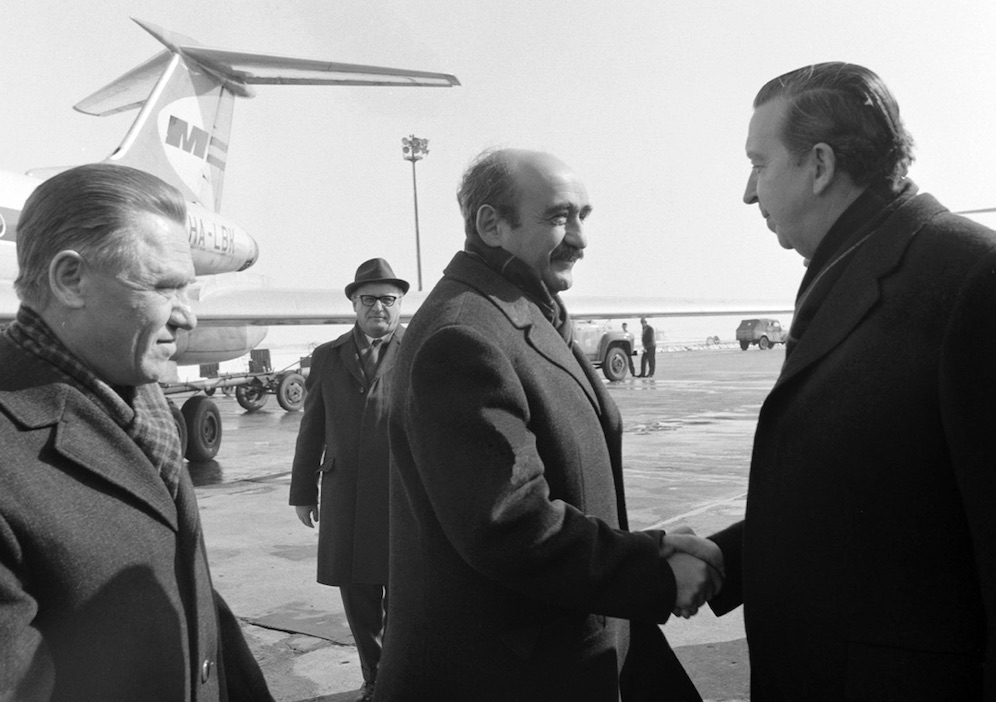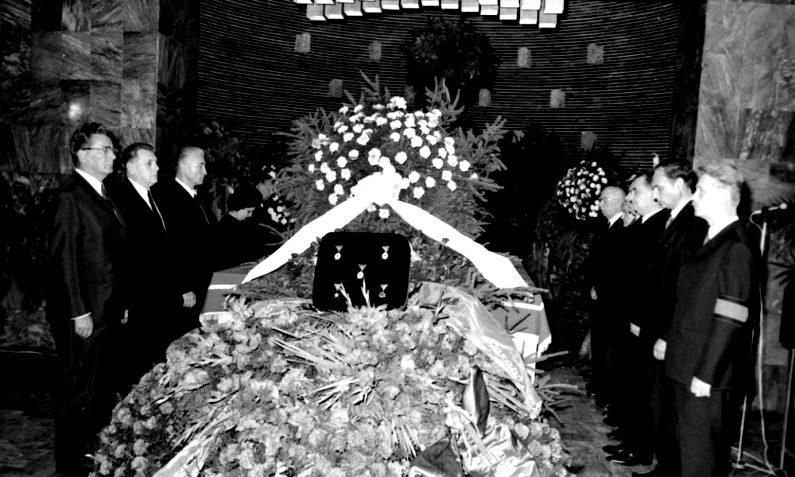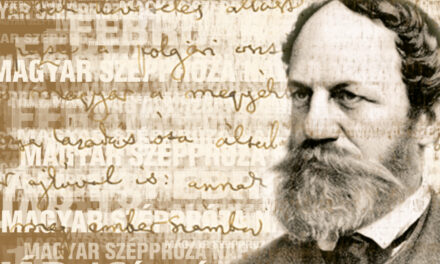The historian Zsuzsanna Borvendég's series was originally published on the PestiSrácok website, but there are certainly those who missed it. But those who haven't read all the parts should also read it again. Knowing the whole picture, can we understand how we got here?
The history of the decades of the Kádár system also includes mysterious deaths. The press talked about suicide or an accidental accident at such times - sometimes it might have been - but the public, accustomed to double talk, usually started speculating immediately. The general experience has been that the exact opposite of what the newspapers claim is true. One of the most famous "suicides" of György Péter , the president of the Central Statistical Office (KSH), who stabbed himself in a hospital room in January 1969 with a fruit peeling knife. Not many people believed the official reading of his death even then, and the autopsy report recorded many facts that supported the truth of the doubters. To this day, it is assumed that he was murdered on the orders of political circles that wanted to stop the new economic mechanism. Péter was one of those who argued in favor of loosening the design order system and participated in the development of the new mechanism. But the innovations were developed and launched by a group of economists, the elimination of a single person could not be an obstacle, as it was not: the mechanism continued to languish for years. What was the meaning of his death?
We have to look for the answer in the sphere of interests of impexes. György Péter did not simply stand in the way of the opponents of the economic changes, but also knew a thing or two about the operation of the foreign mafia.
They seriously harmed the interests of the impex circle
The new mechanism launched in 1968 is referred to as a reform with some exaggeration, even though it did not fundamentally change the framework of the socialist economy. Despite his restraint, he was still dangerous for the circle that by this time had already built up a wide network of relationships with Western companies, as he attempted to break the foreign trade monopoly.
From the beginning of the 1960s, the production companies tried to fight against the abuses of the foreign trade companies, they tried to regain the commercial right and to achieve that the extra profit generated by the foreign trade companies is brought back into the economic circulation in some form - for example by introducing a special tax. During the innovations of '68, many companies regained the right to access the market, but this remained only an exceptional discount, 70% of the turnover up to the threshold of the system change was carried out by external companies. This ratio could have been different if the mechanism had not been overthrown after a few years. There is no question that the impexes did everything they could to derail the system, they even killed key figures for the sake of the goal.

György Péter, President of the Central Statistical Office (KSH), receives the Order of Merit of the Red Flag of Labor from István Dobi, President of the Presidential Council. Photo: MTI/Ferenc Vigovszki
The story is suitable for a crime novel
In 1968, state security launched an investigation against György Péter (original name: Pikler). He was accused of smuggling numismatic treasures between Vienna and Budapest as a member of a Zionist network. They got the information from the Romanian secret service, except six years earlier! In 1962, when the incriminating data arrived, no one was interested in the illegal transport of the head of the KSH to the neighboring capital, but in 1968 the situation suddenly changed. By the end of the year, so much incriminating information had been gathered against Péter that his arrest was ordered. He was in the hospital for a heart problem that needed treatment, so a guard was posted in front of the ward, waiting for him to be in a condition where they could be transferred to experimental custody. This did not happen: despite the police protection in front of the room, he killed himself with a smuggled fruit knife - or they killed him.
What is interesting is not whether György Péter (Pikler) was really a member of a Zionist network, nor what value of coins he smuggled to Vienna (he was really a collector, the Romanian reports were certainly correct), but what the omitted from the investigation materials: that he did all this together with his brother. His younger brother, Ferenc Pikler, was an old man of the movement, his name was already known in illegality as a member of the international brigades, he was one of the most active agents of the Red Aid. After 1945, he actively participated in the nationalization of the electricity industry and the electrification of villages, that is, he worked together with János Sebestyén , the later powerful deputy president of the National Technical Development Committee (OMFB).
The relationship between the Pikleres and János Sebestyén You could read earlier that in 1957, Sebestyén was appointed to the leadership of the Frankfurt trade branch at his own request, where he put himself because he was familiar with the well-established corruption network founded by his predecessor and friend, Károly Junger. He did not come up with his plan alone: the mastermind was Ferenc Pikler - at least according to the knowledge of state security. Pikler also applied for a position abroad at that time: he became the Hungarian representative of the International Atomic Energy Agency established in 1957 in Vienna, a position recommended by János Sebestyén. Pikler held the position until 1962, during which time he smuggled coins and other art treasures to Vienna under diplomatic protection. In other words, at the same time, on the same route, he did the same thing as his brother, who was arrested in 1968, and there was no mention of a connection in the investigative documents, even though it is a non-negligible detail!
We can ignore the possibility that the state security was so amateur that they did not notice the coincidence. Pikler was already employed by the OMFB at the time of the investigation, and as one of Sebestyén's right-hand men, he assisted in the rise of the Siemens lobby: it seems that this position also provided protection against the police. At the same time, someone wanted to sideline his brother, and the proven smuggling activity provided an excellent excuse for this.

János Sebestyén on the Széchenyi wharf after his separation from Hoffmann. September 21, 1960. Source: ÁBTL/mek.oszk.hu
Did he know too much?
György Péter already wrote professional articles against the foreign trade monopoly a decade earlier. His authority was high enough that his opinion was accepted. If we assume that through his brother he could have obtained incriminating information that could have brought down the corruption network or thwarted some of their business deals, it becomes understandable that they wanted to get rid of him, and this would also explain the shortcomings of the investigation, i.e. the fact that they were careful to exclude his brother from the case . No concrete evidence is available, this reading of Peter's death is only one of the possible scenarios, but perhaps the most likely. Not only suicide, but also an accidental accident soon helped his way to the lobby.
In the year the mechanism was launched, a company was founded, which was very important in terms of subsequent expansion. The OMFB, the Ministry of Foreign Trade and some other foreign trade companies established the Intercooperation Foreign Trade Development Company in 1968, which played a key role in the acquisition of embargoed technologies, in conducting cooperations with various companies, but especially in strengthening the market role of Siemens. This company was selected to create the first joint venture with headquarters in Hungary, Sicontact, the domestic representation of the Siemens company, with the cooperation of the Külkereskedelmi Bank led by István Salusinszky But it was a bumpy road to the foundation.
Siemens was about to conclude a framework contract with Hungary, which was also supported by the Soviets, but some of the domestic specialists opposed this. The opponents were aware of the objectionable business actions of the West German company, they knew about the violent rise in the market based on corruption, and they typically Rezső Nyers and Péter Vályi , that is, they were among the supporters of the new economic mechanism. The framework agreement was on the agenda from 1971, and even though Moscow proposed a similar one that same year, domestic economic policy resisted.

At the Ferihegy airport, János Nagy, Deputy Minister of Foreign Affairs, and Alfred Puhan, the US Ambassador to Budapest, bid farewell to Péter Vályi (k), Deputy President of the Council of Ministers. Photo: MTI
Péter Vályi was also against the impex network
Vályi did not even support the impex network as finance minister; it is no coincidence that only after his "overthrow" was the finance minister's decree (1972) that allowed foreign trade companies to establish companies in the West. He also confronted Sebestyény as Deputy Prime Minister. In May 1973, a meeting was held between the Ministry of Foreign Trade and the OMFB, where the competent minister was replaced by Péter Vályi. The specialists present on behalf of the ministry unanimously rejected Sebestyén's proposal to sign the Siemens contract, which caused the second man of the OMFB to seethe with anger. Sebestyén was very angry, he lashed out like a child in his speech, and even sent a letter to all opponents of his plan - we can read in the state security documents.
Péter Vályi's death was also strange
A few months later (September 1973), Péter Vályi was the victim of an unfortunate accident: during his factory visit to the Lenin Metallurgical Works, he was escorted to a working area (to the drainage platform in the immediate vicinity of the smelters) where civilians were not allowed to enter. ( You can read about his death in a separate article. ) The many incomprehensible circumstances of the accident still give rise to speculation. There is no evidence that any kind of intentionality could have played a role in his death, but it is certain that the accident did not go badly for the circles behind Sebestyén. A few weeks before his death, Vályi visited the United States - the first such high-ranking government delegation to represent our country overseas - and began encouraging economic negotiations that could have reduced the market share of the large West German concern back home. Vályi died shortly after returning home. The time of his death roughly coincided with the shutdown of the mechanism and the signing of the Siemens Framework Agreement. In October 1973, an agreement was reached between the concern and Hungary, which paved the way for the founding of Sicontact in 1974 and the spread of Siemens computers in Hungary.
Source: PestiSrácok
Author: historian Zsuzsanna Borvendég
(Cover photo: Péter Vályi's funeral. Photo: MTI)













